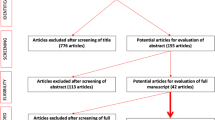Abstract
Introduction and hypothesis
Mesh erosion into the urinary tract following surgery for stress urinary incontinence is a potentially serious complication. Traditional open resection is complicated and potentially morbid. Therefore, we sought to evaluate the long-term patient outcomes following transurethral endoscopic excision using the holmium laser (TEEH).
Methods
A retrospective series of ten patients who had undergone TEEH at our institution between May 2011 and July 2014 were identified. Nine had a prior urethral sling placed, and one had suture erosion following a Marshall-Marchetti-Krantz procedure. Outcomes assessed included resolution of symptoms, successful treatment of exposed mesh on repeat cystoscopy, and recurrence of stress urinary incontinence. Patients were followed up through office examination, cystoscopy and/or through written or telephone correspondence.
Results
The median age of the patients at the time of surgery was 58 years (IQR 54 – 66 years). The median time from anti-incontinence surgery to onset of symptoms was 12 months (IQR 1 – 72 months). Patients with mesh erosion most commonly presented with irritative voiding symptoms (60 %). The median follow-up was 27 months (IQR 14 – 32 months) with 80 % of patients reporting symptomatic improvement. Eight patients underwent follow-up cystoscopy with anatomic success (resolution of erosion on cystoscopy) after one procedure in five patients (63 %). The anatomic success rate was higher for bladder erosions than for urethral erosions (80 % vs. 33 %). Notably, three patients experienced recurrent stress urinary incontinence following TEEH, with one patient undergoing repeat anti-incontinence surgery.
Conclusions
TEEH is a viable, minimally invasive option for management of urinary mesh erosions. Notably, there is a risk of recurrent stress urinary incontinence following laser mesh excision.

Similar content being viewed by others
References
Novara G, Galfano A, Boscolo-Berto R, Secco S, Cavalleri S, Ficarra V, Artibani W (2008) Complication rates of tension-free midurethral slings in the treatment of female stress urinary incontinence: a systematic review and meta-analysis of randomized controlled trials comparing tension-free midurethral tapes to other surgical procedures and different devices. Eur Urol 53:288–308
Daneshgari F, Kong W, Swartz M (2008) Complications of mid urethral slings: important outcomes for future clinical trials. J Urol 180:1890–1897
Hammad FT, Kennedy-Smith A, Robinson RG (2005) Erosions and urinary retention following polypropylene synthetic sling: Australasian survey. Eur Urol 47:641–646
Zhang K, Han J, Yao Y, Yang J, Qiao J (2012) Local reaction to the different meshes at the vesicovaginal space in rabbit model. Int Urogynecol J 23(5):605–611
Frenkl TL, Rackley RR, Vasavada SP, Goldman HB (2008) Management of iatrogenic foreign bodies of the bladder and urethra following pelvic floor surgery. Neurourol Urodyn 27:491–495
Velemir L, Amblard J, Jacquetin B, Fatton B (2008) Urethral erosion after suburethral synthetic slings: risk factors, diagnosis, and functional outcome after surgical management. Int Urogynecol J 19:999–1006
Giri SK, Drumm J, Flood HD (2005) Endoscopic holmium laser excision of intravesical tension-free vaginal tape and polypropylene suture after anti-incontinence procedures. J Urol 174:1306–1307
Feiner BR, Auslender R, Mecz Y, Lissak A, Stein A, Abramov Y (2009) Removal of an eroded transobturator tape from the bladder using laser cystolithotripsy and cystoscopic resection. Urology 73:681.e15–e16
Hodroff M, Portis A, Siegel S (2004) Endoscopic removal of intravesical polypropylene sling with the holmium laser. J Urol 172:1361–1362
Doumouchtsis SK, Lee FY, Bramwell D, Fynes MM (2011) Evaluation of holmium laser for managing mesh/suture complications of continence surgery. BJU Int 108:1472–1478
Jo DJ, Lee YS, Oh TH, Ryu DS, Kwak KW (2011) Outcomes of transurethral removal of intravesical or intraurethral mesh following midurethral sling surgery. Korean J Urol 52:829–834
Nitti VW, Carlson KV, Blaivas JG, Dmochowski RR (2002) Early results of pubovaginal sling lysis by midline sling incision. Urology 59:47–51
Conflicts of interest
None.
Author information
Authors and Affiliations
Corresponding author
Rights and permissions
About this article
Cite this article
Ogle, C.A., Linder, B.J. & Elliott, D.S. Holmium laser excision for urinary mesh erosion: a minimally invasive treatment with favorable long-term results. Int Urogynecol J 26, 1645–1648 (2015). https://doi.org/10.1007/s00192-015-2752-3
Received:
Accepted:
Published:
Issue Date:
DOI: https://doi.org/10.1007/s00192-015-2752-3




